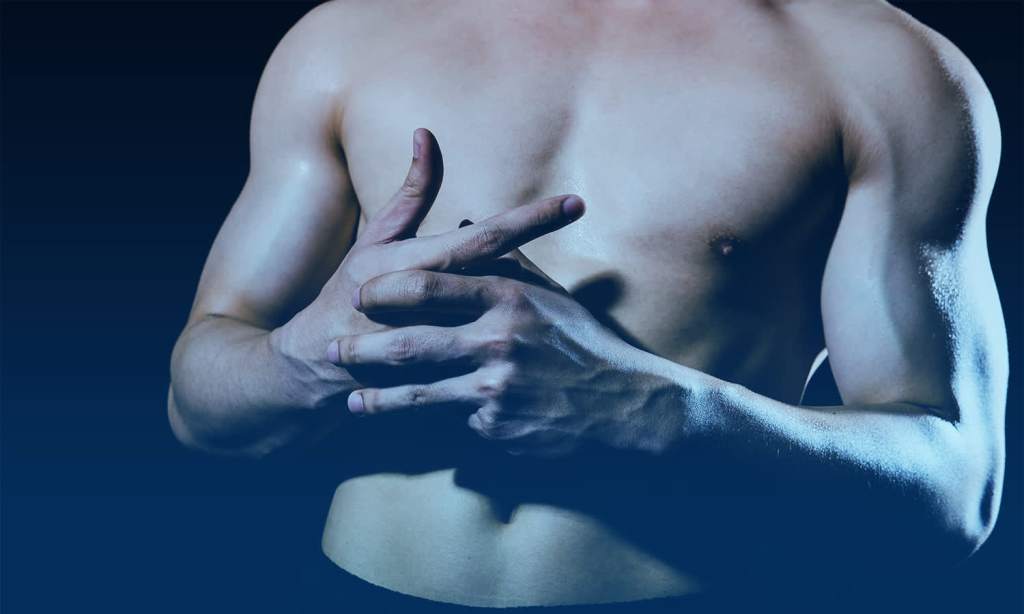If you are one of the millions of Aussies currently in lockdown across the country, chances are that you’ve not been able to do a whole lot of strength training recently.
Unless you’ve managed to snap up some of the limited supplies of expensive home work out equipment, it’s likely that your body is undergoing a process known as muscular atrophy.
This is a relatively rapid process whereby your body decides that if you’re not using it, you’re better off losing it because the body is a dick like that.
This is a process that happens to people both young and old and studies have shown that periods of inactivity can have significant impacts on muscle mass. With the gyms closed, it’s likely that you’ve already lost a lot of the hear-earned gains you’ve made in the gym.
Muscular atrophy also occurs as a part of the condition known as sarcopenia — the age-related loss of muscle mass and function that begins to affect people in their 30s and progresses as they get older.
While sarcopenia is largely thought of as a linear process, recent research has shown that intense periods of doing very little activity can kick start the process, speeding it up and resulting in short cycles of severe declines in muscle mass.
Again, this is a condition that can affect everyone, even those in their 20s.
While lockdown has seen a rise in people walking and doing other moderate exercises — because there’s literally nothing else to do — one study also found that our sedentary activity had increased by around 75 minutes per day. Overall, we’re doing a lot less exercise than we normally would or should.
So, what can we do about it?
The main thing is trying to do a little bit of exercise to maintain muscle levels. Although you may not be able to do your regular routine without the help of all the fancy gym equipment, anything you can do is likely to limit significant muscle loss.
Bodyweight exercises are a great way of putting your body under the strain it needs, to know those muscles are worth keeping.
Equipment-free things like push-ups, planks, tricep dips, lunges, squats, calf raises and sit-ups will go a long way to helping fight off the worst of the muscular atrophy.
Ideally, you should be aiming for at least 30 minutes of moderate to vigorous exercise per day, with two of those days being strength training. Walking, running, cycling, and swimming are all great ways of keeping your exercise levels up.
Food also plays a vital role in helping to maintain your physique. While exercise should be your main focus here, what you put in your body can also have a major impact.
Studies have shown that eating cacao, foods rich in vitamin C, and drinking green tea can have a significant effect on the prevention of muscle loss.
Researchers from the Lleida Biomedical Research Institute in Spain recently published a new study looking at the effect of green tea catechins and cocoa flavanols on age-associated changes in the neuromuscular system of mice.
Catechins and flavonols are both flavonoids — a type of compound found in fruit, vegetables, dark chocolate and red wine — and have good anti-inflammatory and anti-oxidant properties.
Chronic inflammation, oxidative damage and poor nutrition are factors in the progression of sarcopenia and muscular atrophy — things that green tea and cocoa were shown to protect against.
Both foods were found to boost the quality and density of nerve cells in muscles and “significantly improve” the survival rate of the mice in the study. Perhaps that dark chocolate is not such a bad idea after all.
Of course, these are mice and not people, but the results are promising and both cocoa and green tea have a host of other benefits, so it can’t hurt to give them a try.
Similarly, a 2020 study found that older people who eat foods high in vitamin C have the best skeletal muscle mass.
Researchers in the UK looked at 13,000 people between the ages of 42 and 82 and compared their muscle mass with the amount of vitamin C they consumed in their diets and the levels in their blood.
Unsurprisingly, those with the highest levels of vitamin C in their diets and bodies also had the highest overall muscle mass.
The lead researcher in the study, Professor Ailsa Welch, said that “We know vitamin C consumption is linked with skeletal muscle mass. It helps defend the cells and tissues that make up the body from potentially harmful free radical substances”.
Foods that are high in vitamin C include citrus fruits like oranges, lemons, and limes as well as berries and black currants. Broccoli, peppers, Brussels sprouts, and sweet potatoes also have high levels of vitamin C.
So, if you’re supporting your body with as much exercise as you can fit in, make sure to incorporate as many of the above food as you can to ward off the unfortunate side effect of muscle loss that lockdown can have.
Read more stories from The Latch and subscribe to our email newsletter.







